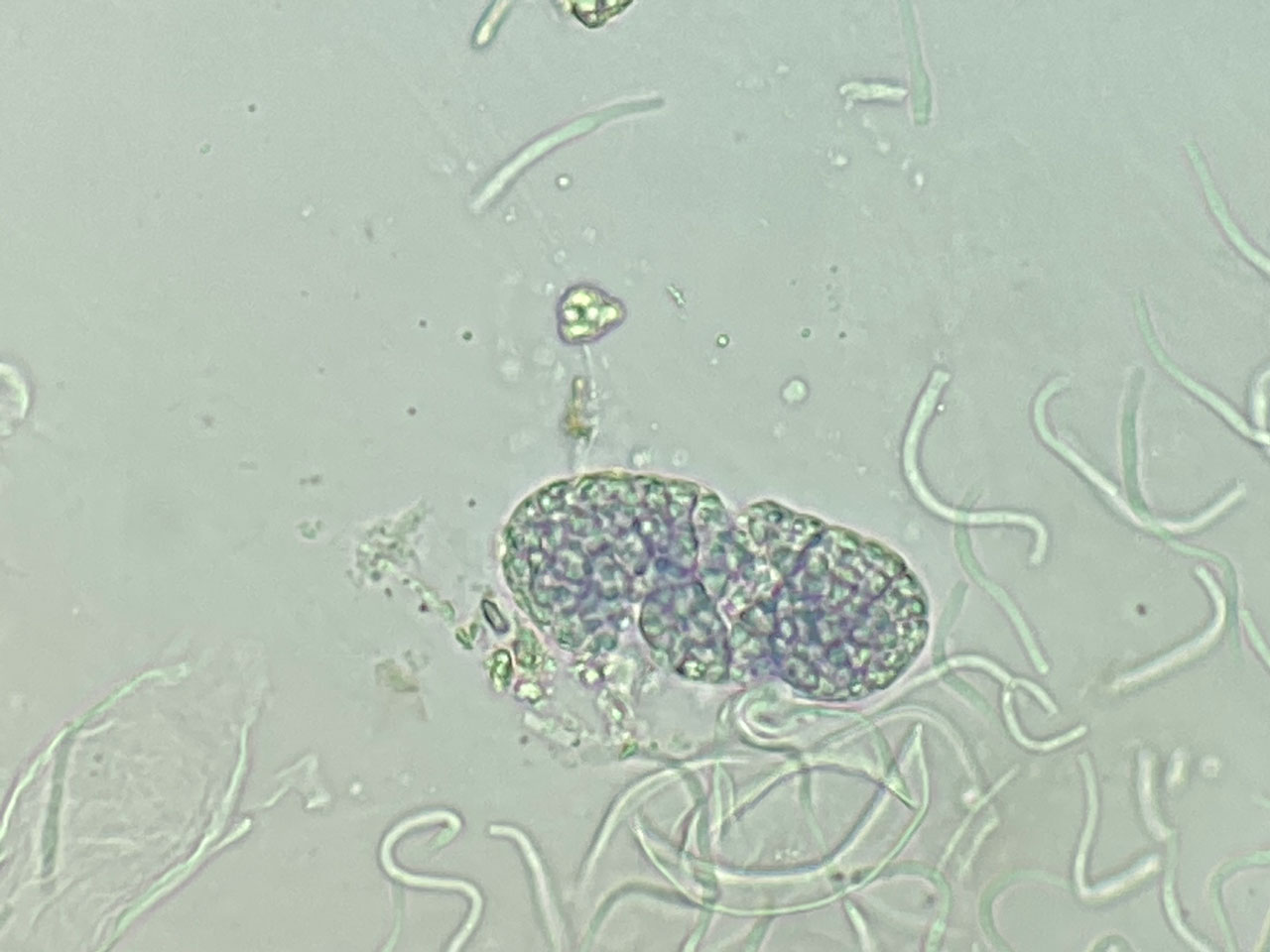Xerotrema quercicola
This is a very inconspicuous fungus of lignum in old woodlands recorded by lichenologists. It is very difficult to spot when dry but, if searched for when damp, the tiny urceolate apothecia with black dentate margins open up and are distinctive. Found mainly on Oak lignum (but has rarely been found on conifer lignum) on large pieces of dead wood in open humid oceanic woodlands. The similar Xerotrema megalospora, has larger spores and exclusively occurs on Pine lignum in native pinewoods in the central and eastern Highlands.
Thallus inconspicuous, dubiously lichenised. Apothecia 0.3–0.6 mm diam., the margins dentate, with coarse radial striations; disc urceolate, dark brown; true exciple distinctly green-tinged in water mounts, lower parts K/I–. Asci 140–180 × 35–40 μm, 1-spored. Ascospores 52–98 × 16–28 μm., composed of numerous cells individually 3–4 μm diam., K/I+ violet.
The outer side of the margins have a thin layer adhering lignum, making the apothecia difficult to see when it folds shut when dry. Separated from X. megalospora by the smaller K/I+ violet ascospores. Xerotrema megalospora is found the central and eastern Highlands, mostly beyond the known range of X. quercicola and on Pine lignum, but there is some overlap in their respective distributions and in habitat, so microscopic examination is advised is cases of doubt.
On lignum of standing or fallen and propped, decorticated Oak trunks in old woodlands and rarely parkland, from the New Forest (Hampshire) to N.Scotland (Skye & E. Ross). In Ireland, also mainly on Oak lignum, but recorded on Yew in Killarney (Kerry) and Larch at Powerscourt (Wicklow). Potentially could occur on native Pinus in western Scotland. Endemic.

Western Britain, from the New Forest (Hampshire) to N.Scotland (Skye & E. Ross). In Ireland in S.W. Ireland (Kerry) and the Wicklow Mountains
Xerotrema quercicola has a widespread but fragmented distribution and is very restricted locally by habitat availability. Typically found at low densities in woods with an abundance of standing dead wood. Found in humid locations but on reasonably well lit dead wood, and probably threatened by increasing shade at some sites.
Britain: Near Threatened, International Responsibility species
Cannon, P., Coppins, B., Aptroot, A., Sanderson, A. & Simkin, J. (2024). Ostropales genera I, including Absconditella, Belonia, Clathroporinopsis, Corticifraga, Cryptodiscus, Cryptolechia, Francisrosea, Gomphillus, Gyalecta, Gyalidea, Gyalideopsis, Jamesiella, Karstenia, Nanostictis, Neopetractis, Pachyphiale, Petractis, Phialopsis, Phlyctis, Ramonia, Sagiolechia, Secoliga, Sphaeropezia, Spirographa, Stictis, Thelopsis, Thrombium and Xerotrema. Revisions of British and Irish Lichens 38: 1–60.
Text by Neil A Sanderson, based on Cannon et al (2024).








